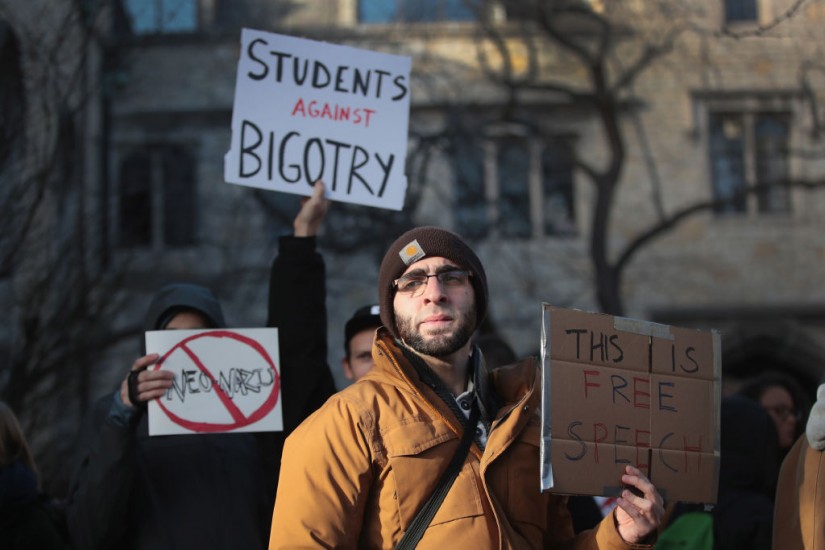There’s a story conservatives have been telling about the decline of free speech on campuses, and it goes like this: America has spiraled downward from a golden age, when the groves of academe were precincts of whole-hearted civil freedom, to today, when hypersensitive left-wing students, obsessed by race- and gender-based “microaggressions,” clamor for “safe spaces” and “trigger warnings.”
Vice President Pence told this story at Notre Dame’s commencement in May: “Far too many campuses across America have become characterized by speech codes, safe zones, tone policing, administration-sanctioned political correctness, all of which amounts to nothing less than suppression of the freedom of speech. These all-too-common practices are destructive of learning and the pursuit of knowledge, and they are wholly outside the American tradition.”
Wholly outside? The vice president didn’t do his homework. Americans may like to think of their institutions of higher learning as grounded in classically liberal ideas, as places where, in the words of John Stuart Mill, “there ought to exist the fullest liberty of professing and discussing, as a matter of ethical conviction, any doctrine, however immoral it may be considered.” But in practice, American campuses have rarely been quite so welcoming to nonconforming views. Speech has gotten faculty fired and students arrested; it has been met not only with dirty looks but also with heckling and sometimes violence.
What’s true is that old forms of censorship — by administrative fiat, governing boards, government regulations and prosecutors — are less common than they once were. Today, it’s more likely that the call to rule out obnoxious views comes from students. And yet one way or the other, freedom is embattled. Golden ages only show up in rearview mirrors, and even then, objects may be farther away than they appear.
If we look back over the past 100 years, perhaps the lowest tolerance for academic freedom has coincided with war and global tensions. The enemies of dissent frequently invoked menaces from abroad as they clamped down on speech.
For example, in 1917, Columbia University, where I teach, held two professors guilty of “disloyalty” and fired them for opposing U.S. entry into World War I. The following year, 12 members of the faculty at the University of Nebraska were made to go before “loyalty trials” convened by the state-designated Nebraska Council of Defense. Although all were cleared, the university proceeded to force out three of them for “inciting public criticism” of the school.
Likewise, the Cold War, at its peak, fueled clamor for uniformity. In 1950, 31 professors at the University of California were fired after refusing to sign a loyalty oath.
